Lecture Notes 2 PDF

| Title | Lecture Notes 2 |
|---|---|
| Course | Elementary Psychology |
| Institution | University of Iowa |
| Pages | 3 |
| File Size | 45.7 KB |
| File Type | |
| Total Downloads | 63 |
| Total Views | 152 |
Summary
Lecture #2 notes...
Description
Lecture Notes: Intelligence Date: November 17th, 2017 Differential Psychology Study of individual differences. -
The power of good responses from the point of view of truth or fact.
-
Ability or capacity of abstract thinking and adaptation.
Arthur Jensen Intelligence, Race and genetics ( Racial differences in IQ) 1960’s White and Black Americans had ~15pt of difference in average “IQ” scores. White 100 +(-) 20 vs Black 85 +(-) 20 Early attempts to measure Intelligence: -
Assumed to be innate
-
Biological Brain differences - Differences in intelligence
-
Craniometry Bigger the brain, more intelligent Size of skull reflects size of brain Head measurer was used
-
Experiment: Use fossils of different races. Fill them with rice, get a measure of volume. (Morton’s final summary of cranial capacity by race)
-
Experimenter bias, Gould knew the races.
-
Re- did the experiment without bias, results were different.
Sir Francis Galton: -
Cousin of Darwin
-
Twin studies / adoption studies
-
Used “ anthropometric measurement” Human physical variation to study intelligence.
-
One of the first to use correlation approach
-
Gave people sensory discriminative tasks.
-
Better Nervous system, more intelligent (this was what he purposed but it is not exactly true. BUT!)
-
Brain anatomy approach was shifted by him to brain functions.
Alfred Binet: -
Introduced cognitive components:
-
Vocabulary, Imagery, Comprehension, Creative.
-
Showed pictures to kid, he made them arrange them to form a story.
-
He also gave us the “What is wrong with the picture” test.
Distinction Mental age vs Chronological age Example C.A (10 years) vs M.A (8 years)
Deficiency 2 years
-
Can now quantify deficiency
-
Does absolute difference capture severity of deficit? No, need proportionality.
William Stern: Use the quotient M.A / C.A x 100 = IQ - As people got older, IQ lowered. David Wechsler: Use standard scores. Variations of Intelligence: Challenged= I.Q of 70 or less Mildly challenged: 52-67 Moderately challenged: 36-51 Severely challenged: 20-35 Profoundly challenged: < 20 Gifted= I.Q of 130 or more Lewis Terman = Lifespan study of genius -
Interviewed genius kids for 30 years. Wanted to know how they were doing= All good! They were healthier than the average person and wealthier.
-
Conclusion= Is good to be smart.
Factor analysis: -
Is intelligence based on one thing or various factors?
-
E.g: Test Ability to add, divided, subtract and multiply.
-
Test vocab, reading skills, comprehension.
-
Do these correlate?
Theories of factor analysis: 1) Spearman: “g” factor General Intelligence ( Understanding from experience, relation between things (logic), Generalize instants. “s” factors Specific abilities. 2) Thurstone: 7 factors = Primary mental abilities
-
Verbal Comprehension, Numerical ability, Spatial relations, perceptual speed.
3) Guildford Cube 120 factors Represented in a Rubik Cube ( Contents x Operations x Products) 4) Cattel Fluid vs Crystallized intelligence Fluid Reasoning ability, Born with, Culture-free, Potential to learn and to solve problems. Crystallized What you know, booksmart, Acquired knowledge and skills. 5) Stenberg Triarchic theory of intelligence a) Analytic (Componential) (IQ) b) Creative (Experiential) (Divergent thinking) c) Practical (Contextual) (Adapt to real life demands)...
Similar Free PDFs

Lecture notes, lecture 2
- 3 Pages

2 - Lecture notes 2
- 5 Pages

Lecture notes, lecture Chapter 2
- 11 Pages
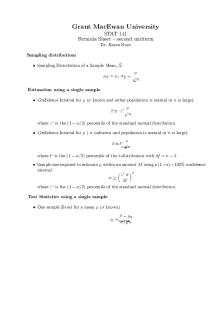
Lecture notes, lecture formula 2
- 1 Pages

2 Biodiversity - Lecture notes 2
- 33 Pages

Chapter 2 - Lecture notes 2
- 30 Pages
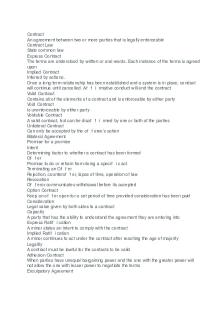
Blaw 2 - Lecture notes 2
- 4 Pages

Chapter 2 - Lecture notes 2
- 4 Pages
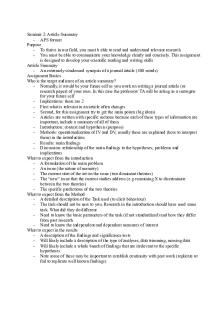
Seminar 2 - Lecture notes 2
- 2 Pages
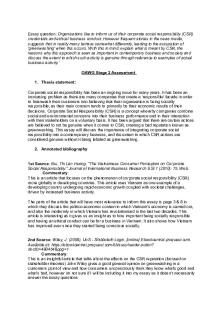
Stage 2 - Lecture notes 2
- 3 Pages
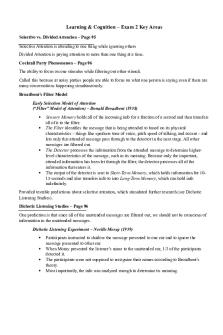
Exam 2 - Lecture notes 2
- 5 Pages

Lectia 2 - Lecture notes 2
- 3 Pages
Popular Institutions
- Tinajero National High School - Annex
- Politeknik Caltex Riau
- Yokohama City University
- SGT University
- University of Al-Qadisiyah
- Divine Word College of Vigan
- Techniek College Rotterdam
- Universidade de Santiago
- Universiti Teknologi MARA Cawangan Johor Kampus Pasir Gudang
- Poltekkes Kemenkes Yogyakarta
- Baguio City National High School
- Colegio san marcos
- preparatoria uno
- Centro de Bachillerato Tecnológico Industrial y de Servicios No. 107
- Dalian Maritime University
- Quang Trung Secondary School
- Colegio Tecnológico en Informática
- Corporación Regional de Educación Superior
- Grupo CEDVA
- Dar Al Uloom University
- Centro de Estudios Preuniversitarios de la Universidad Nacional de Ingeniería
- 上智大学
- Aakash International School, Nuna Majara
- San Felipe Neri Catholic School
- Kang Chiao International School - New Taipei City
- Misamis Occidental National High School
- Institución Educativa Escuela Normal Juan Ladrilleros
- Kolehiyo ng Pantukan
- Batanes State College
- Instituto Continental
- Sekolah Menengah Kejuruan Kesehatan Kaltara (Tarakan)
- Colegio de La Inmaculada Concepcion - Cebu



